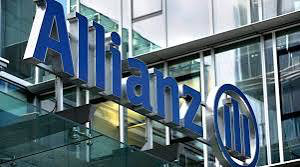Building On New Risks: Construction In The Age Of Greening

Robert Ter Morshuizen, Head of Energy and Construction at AGCS
Fires, natural disasters and defective products are the top causes of claims on construction sites, but the nature of these risks is changing as the global economy strives to decarbonize. Here, Robert Ter Morshuizen, Head of Energy and Construction at Allianz Global Corporate & Specialty (AGCS) in South Africa, explores how new building methods and materials are shaping the new risk landscape.
New AGCS claims analysis identifies the top drivers of construction insurance claims over the past five years – but the nature of these risks is changing.
The transition to a net zero economy brings numerous opportunities but the use of new materials and construction methods will require close risk management co-operation between firms and their insurers.
Constrained supply chain and material shortages will likely affect project delivery and margins.
The cost of some property and business interruption losses will increase in future, driven by factors such as inflation and labor shortages.
In June 2022, a fire outbreak at a hospital construction in Istanbul, Turkey, destroyed most of the newly installed medical and security devices, and injured three people. A few days later, firefighters from West Fargo in North Dakota attended a flaming construction site behind the town’s Costco. And a month after that, a blaze broke out at a railway development in Stuttgart, Germany.
What was common in these and hundreds of similar incidents that occurred worldwide in the same month was the element of fire. Fire and explosions remain the number one cause of construction and engineering insurance claims, accounting for 27% of the value of insurance claims over the last five years, according to industry claims data analysis conducted by AGCS.
Natural catastrophes, such as hurricanes or floods, account for almost a fifth of claims by value (19%), followed by defective products (10%). Faulty workmanship or maintenance (8%) and machinery breakdown (7%) round out the top five causes of construction and engineering losses according to the value of claims.
Fires and explosions have long been the primary cause of insurance claims in construction. And, despite significant improvements in risk management and fire prevention, they will always remain a significant hazard because of the nature of the work.
Construction often involves hot work using open flames, such as with welding, the local application of heat with equipment like hot tar boilers or the generation of sparks during leadwork and grinding. Undertaking these activities in the vicinity of combustible materials, which are plentiful on building sites, creates the potential for disaster.
The risks and benefits of greening
The analysis was conducted on 22,705 insurance claims made worldwide between January 2017 and December 2021. The claims were worth approximately €12.8bn in value and include the share of other insurers as well as AGCS. But if there is an impression that the risks remain in stasis, that is not the case.
AGCS expects the global construction market to experience sustained growth over the next decade, driven by a surge in government spending on infrastructure, such as last year’s $1trn bipartisan infrastructure bill in the US, factors such as rising populations in emerging markets, urbanization, a growing working age population, and the transition to a low-carbon or net-zero economy. According to a recent report from Marsh and Oxford Economics, the global construction industry is forecast to grow 42% to $15trn by 2030. The construction industry is expected to be a major driver of economic growth in the coming decade, outperforming manufacturing and services.
The transition to a low carbon or net zero economy brings numerous opportunities, requiring significant investment in alternative forms of energy, such as wind, solar and hydrogen, as well as power storage, transmission and supporting services. According to the International Energy Agency (IEA), pursuing net zero will create a market for wind turbines, solar panels, lithium-ion batteries, electrolyzers and fuel cells of well over $1trn a year by 20502, comparable in size to the current oil market. Huge investment is also required to make buildings more sustainable and lower greenhouse gas emissions. Green building in emerging markets represents a $24.7trn investment opportunity by 2030, according to the International Finance Corporation (IFC). Climate change adaption and mitigation will also give rise to further opportunities for the construction sector.
However, this global construction boom will also bring challenges as well as opportunities. The rapid adoption of prototype technology and the utilization of new building methods and materials will require close co-operation between underwriting, claims and risk engineering, as well as between insurers and their clients as new technologies can significantly alter the risk landscape, especially when mass deployed.
Take offshore wind, for example, which is at the cutting edge of renewables. The global offshore wind energy market size is expected to increase from a revenue of $33.5bn in 2021 to $89.8bn by 2030, with a CAGR of 12.1%. This field is booming, particularly as offshore wind turbines are more efficient than onshore wind turbines due to consistent wind flow.
However, offshore wind farms are complex to build, especially as projects grow in size and move further out to sea into deeper waters. Construction also involves high-value components and specialist equipment and vessels.
Offshore wind farms are subject to harsher weather and typically use new technologies, which can be pushed to their limits. Turbine blade damage or gearbox failure can cost double or triple the amount than for an onshore turbine to repair. Underwater cables, connectors and power converters are also expensive and time-consuming to repair.
Any potential defects in design mean that the losses from such projects can quickly soar. Often each new project uses new construction methods and sophisticated, yet sometimes prototype, technology that can be expensive to assess and replace. Not every insurance company can deploy capacity for complex risks, where potential claims could be significant, due to the values insured.
New grids on the block
New risk challenges lie ahead for the construction industry as the world decarbonizes. For example, while timber is being used more frequently in construction because of its lesser environmental impact, it presents challenges due to several unknown variables when it is damaged by either water or fire. The unknown exposures of newer construction materials used as part of sustainability and net zero strategies could also limit coverage capacity and hinder or delay projects.
The same questions that apply to individual building elements, such as concrete, also apply more widely. Green hydrogen – produced by splitting water into hydrogen and oxygen using renewable electricity – could be critical in a successful energy transition. Yet, while the technology to produce green hydrogen is established, scaling up requires the construction of electrolysis plants, pipelines, and storage and export infrastructure, such as port terminals and shipping. An associated risk is that hydrogen is highly flammable and combusts at low concentrations. Leaks are hard to identify without dedicated detectors as hydrogen is colorless and odorless, and conventional fire systems are not designed to handle leaks.
In 2021, the Medupi Power Station in South Africa, near the border with Botswana, was severely damaged after hydrogen used in the generator cooling system exploded. Reports have indicated that it may take years to repair and cost up to $2.5bn.
Approaches to constructing the technology to produce green hydrogen in massive quantities, such as large electrolyzers, and then incorporating them into existing renewable energy infrastructure, is still in its infancy.
Companies operating in this space may face new risks because of the need to use prototype technologies and the risk that implementation involves possible infrastructure challenges. This is just one example of the new world of risks we are entering.
Green hydrogen will be an important component of many businesses’ decarbonization strategy going forward. AGCS recently deployed capacity for the construction of one of the world’s largest renewable energy hubs, to produce, store, and deliver green hydrogen in the US. Given the innovative nature of such large green hydrogen facilities, the underwriting and risk consulting teams in North America worked closely with their counterparts in the headquarters in Munich. We had the chance to get to know the insured and understand their construction methodology in detail. There was also close communication between the AGCS energy and power generation practice groups.
Such cross-collaboration across specialisms allowed the teams to confirm the project was technologically sound, used reliable equipment, employed experienced staff, and was overseen by reputable management.
The decade of infrastructure
Despite the boom in construction, AGCS observes some conditions could prevent firms from taking full advantage of the opportunities if they are not resolved or well managed. The three AGCS nominates are materials supply (exacerbated by the impact of rising inflation), labor shortages, and the increasing risk of cyber incidents as the industry embraces connected equipment and tools, sensors and cloud-based platforms.
Although construction is not traditionally exposed to cyber-attacks, the shared IT platforms being introduced on construction sites, for example, increase the vulnerability to cyber incidences and their potential consequences. These can include delays and reputation damage due to malicious hacks of critical project data.
Labor shortages are readily evident in many countries as construction firms have ramped up activity after Covid-19 lockdowns. Surges in growth could exacerbate the existing lack of skilled labor. The introduction of new construction designs, materials and techniques also introduces significant risks and constraints because not all staff are trained to work with them, which could result in repetitive loss scenarios.
Covid-19 demonstrated how industries can be dramatically disrupted. The pandemic caused the global market for raw materials to slow, resulting in long lead times for construction firms, adding to the existing demand for locally distributed products. The increase in demand has resulted in high prices for materials and delayed or cancelled projects.
Let’s not forget that this pandemic is still on, that supply chains are still constrained, and geopolitical tensions are only adding to this situation. This will all affect project delivery and margins.
This is leading to one of the most dramatic ways the risk landscape in construction is changing – the rocketing costs of claims, again exacerbated by surging inflation. Claims create two issues: the expense of replacing damaged material and the time it takes to replace that material. Both are affected by current supply chain issues and labor shortages.
The cost of construction is soaring in many countries due to higher prices for energy and raw materials. The costs of cement, timber and steel have risen dramatically; steel, for example, is almost 50% more expensive than it was a year ago, while construction costs are nearly 20% higher in the US and over 25% higher in the UK. At the same time, competition for talent could also drive up wage inflation, further increasing costs.
Getting concrete about climate change
Concrete is the second most consumed material on earth after water. Three tonnes are used annually for every person on the planet. Unfortunately, cement – the key ingredient in concrete – contributes about 8% of the world’s carbon dioxide (CO2) emissions.
Efforts are underway to develop ‘concrete 2.0’, new forms that use green and novel types of cement. But if these innovations prove commercially viable, underwriters and carriers will not have the luxury of years of rigorous testing and use to see how the product performs and what represents a good versus a bad risk.
From an exposure perspective, AGCS views certain new building materials or construction methods as ‘prototypes’. For instance, in modular construction – whereby elements of a building are constructed off-site – many design codes and standards do not yet have adequate guidance, as it is relatively new to the market compared to more established codes and standards for conventional construction methods, which have developed over decades. It is also difficult to assess the resilience of modular construction to extreme natural perils. Underwriters work closely with brokers and clients to learn about such new construction methods and materials before they insure their attendant risks.
There’s always this collaboration when it comes to exposure and innovation. The more information clients share with us, the better we understand what they’re doing.
Top 5 causes of claims by value in construction and engineering insurance
1. Fire and explosion 27%
2. Natural catastrophes 19%
3. Defective products 10%
4. Faulty workmanship or maintenance 8%
5. Machinery breakdown 7%
Source: Allianz Global Corporate & Specialty. Based on analysis of 22,705 insurance claims between January 1, 2017, and December 31, 2021, worth approximately €12.8bn in value. “Other”causes of loss account for 29% of the value of all claims. Claims total includes the share of other insurers in addition to AGCS.





